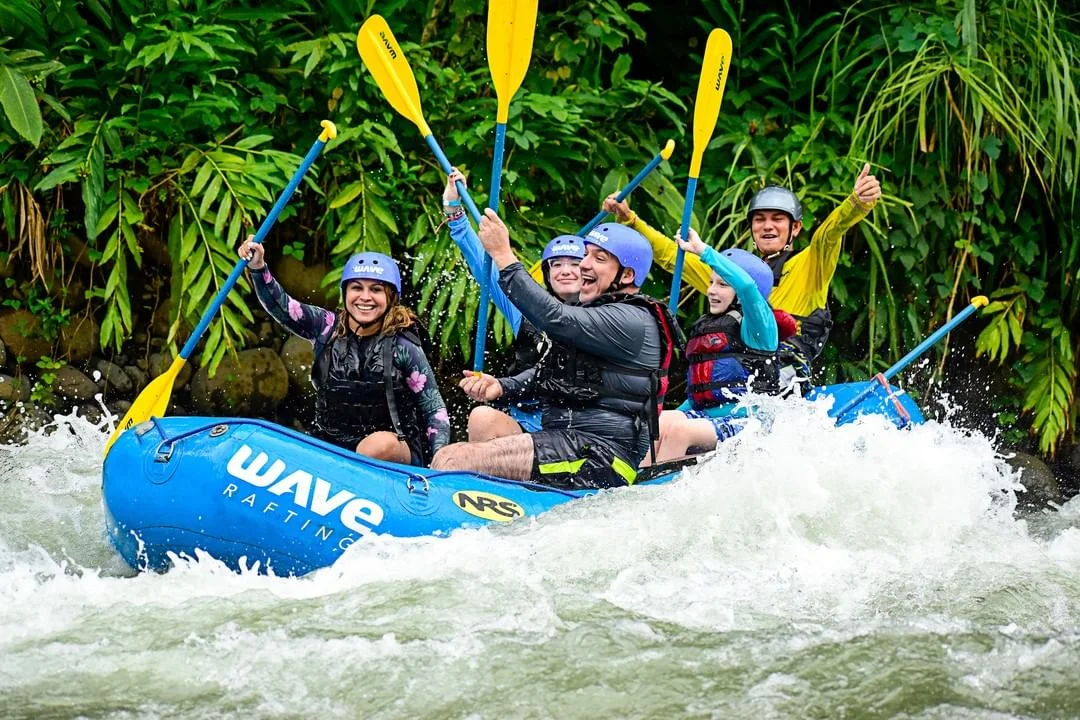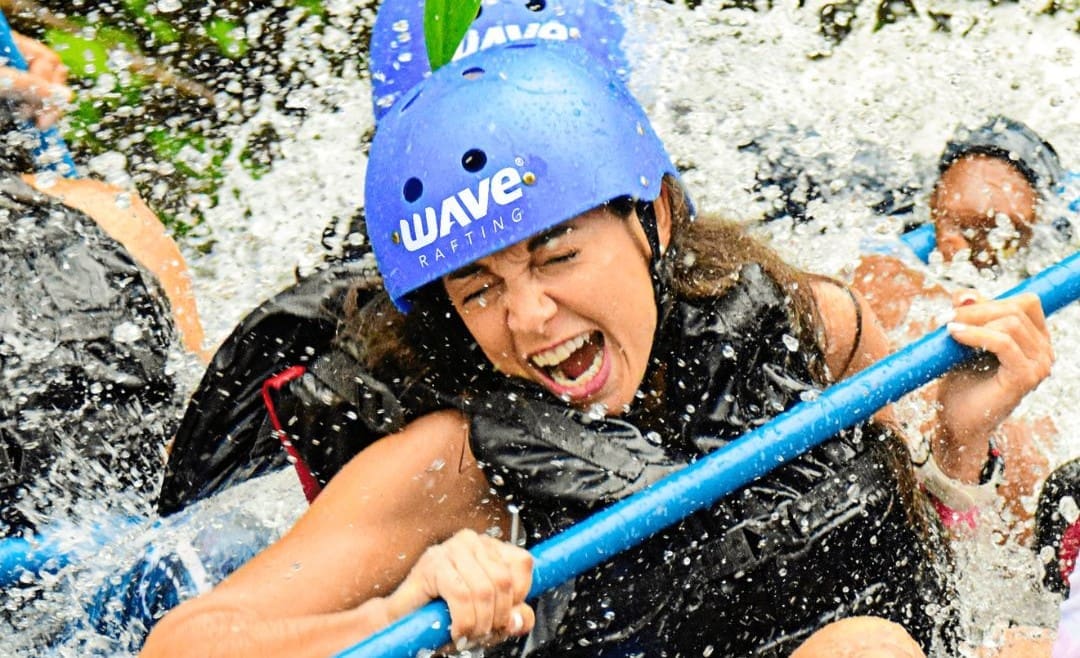Costa Rica’s rivers are a paradise for adventure seekers, especially those looking to experience the thrill of white-water rafting. But before you grab a paddle and dive into this adrenaline-pumping activity, it’s crucial to familiarize yourself with some essential white water rafting tips for beginners.
Whether you’re a seasoned paddler or a complete beginner, knowing what to expect can make your experience unforgettable for all the right reasons.
Key Takeaways
⦁ Select the Right River Based on Skill Level: Beginners should start with Class I-II rapids, which offer a manageable introduction to white-water rafting, while more experienced rafters can tackle Class III-IV rapids for a greater challenge.
⦁ Always Raft with a Professional Guide: Certified guides are essential for ensuring safety, offering navigation, and providing vital instructions throughout the trip.
⦁ Wear Proper Gear and Stay Prepared: Essential rafting gear includes a life jacket, helmet, and secure footwear. Understanding and following rafting commands is crucial for a safe and enjoyable experience.
Choose the Right River for Your Skill Level
Not every river is the same. The good news is that when it comes to rafting in Costa Rica, there are rivers suitable for every level of adventurer.
As a beginner, it’s important to select a river that matches your experience and fitness level.
Popular rivers like the Pacuare and Sarapiquí offer routes ranging from beginner-friendly to more challenging. A good rafting guide will help you choose the right course, depending on your skills and how much adventure you’re seeking.
White water rafting tips for beginners often recommend starting with Class I-II rapids. These offer a fun but manageable introduction to rafting, with smaller waves and minimal obstacles.
As you become more confident, you can work your way up to the more thrilling Class III-IV rapids, known for their bigger waves and more technical navigation.
Always Go with a Professional Guide
No matter how confident you feel, rafting guide supervision is a must. In Costa Rica, most river rafting companies provide certified guides who are well-versed in safety protocols, local river conditions, and rescue techniques. A river rafting guide will not only help you navigate the rapids but also provide critical safety instructions before and during the adventure.
Wear the Right Gear
Do you need special gear for rafting? The short answer is yes!
Rafting is a wet and wild adventure, so you’ll need the right gear to stay safe. At a minimum, ensure you have:
⦁ A high-quality life jacket (personal flotation device)
⦁ A helmet to protect against unexpected bumps
⦁ Secure footwear like water shoes or sandals with straps
Avoid wearing flip-flops or anything that might slip off in the water. Also, protect your skin from the sun by applying waterproof sunscreen and wearing quick-drying clothes that cover sensitive areas.

Know the Commands
Before hitting the rapids, your guide will review some basic rafting commands. These commands, such as “forward paddle” or “get down,” are essential for working as a team and safely navigating through tricky spots.
Listen carefully during this orientation—understanding and following these instructions is one of the most important white water rafting tips for beginners. Miscommunication can turn an exhilarating trip into a dangerous situation, so always stay alert.
Be Prepared for the Unexpected
You might wonder, is white water rafting dangerous? While it’s true that rafting carries inherent risks, most accidents are preventable with proper preparation and adherence to safety guidelines.
Unexpected situations, like falling out of the raft, can happen, even to experienced rafters. In such cases, remember the following safety tips:
⦁ Stay calm and try to float on your back with your feet pointing downstream.
⦁ Never try to stand in fast-moving water, as you could get caught on rocks.
⦁ Wait for your rafting guide to assist you in getting back into the raft.
Understand the River’s Classifications
Rivers are classified based on the difficulty of their rapids. As you plan your rafting trip, you’ll likely hear terms like Class I through Class V. Here’s a breakdown:
⦁ Class I: Gentle, easy water with minimal obstacles.
⦁ Class II: Moderate rapids with clear channels, great for beginners.
⦁ Class III: Larger waves, moderate difficulty, best for intermediate rafters.
⦁ Class IV: Intense rapids with technical passages, recommended for experienced rafters.
⦁ Class V: Extremely challenging, for advanced and expert rafters only. There are no commercial rivers in Costa Rica to operate Class V rafting.
A river rafting guide can help explain what to expect at each level and will typically recommend the appropriate rapids based on your experience.
Know the Weather Conditions
Costa Rica’s weather can be unpredictable, and river conditions can change rapidly with rainfall. The consequence is a rise in the water level, which increases the difficulty of the rapids.[1].
For this reason, before embarking on your adventure, check the forecast, and make sure your tour operator does the same. A responsible company will postpone trips if conditions are unsafe.
White Water Rafting Tips for Beginners: Hydrate and Fuel Up
Rafting requires physical stamina, so make sure you’re well-hydrated and have eaten a light meal before your trip. Avoid heavy meals or alcohol, as they can impair your judgment and performance.
Many rafting companies provide snacks or lunch after the trip, allowing you to refuel (which we are sure you will need!).
Are you ready to visit Costa Rica?
White-water rafting in Costa Rica is an exhilarating experience that promises both thrills and natural beauty. While it may seem intimidating, especially if you’re asking yourself, is white water rafting dangerous, the key to a safe and fun adventure lies in preparation.
Armed with these white water rafting tips for beginners, you can confidently hit the rapids knowing that you’ve done everything to ensure a safe and unforgettable trip.
Plus, by working with a qualified rafting guide, understanding the river classifications, and following safety protocols, your Costa Rica rafting adventure will be one for the books!
Frequently Asked Questions
What is the best time of year for white-water rafting in Costa Rica?
The ideal time for rafting in Costa Rica is during the rainy season (May to November), as the rivers are fuller and provide better rapids. However, tours are available year-round.
Can children participate in white-water rafting in Costa Rica?
Yes, many rafting companies offer family-friendly trips on Class I-II rapids suitable for children, typically starting from ages 8-10, depending on the river conditions and company policies.

